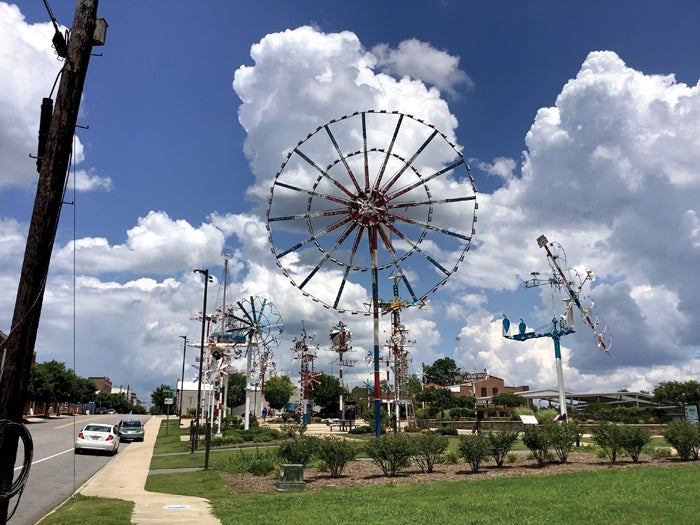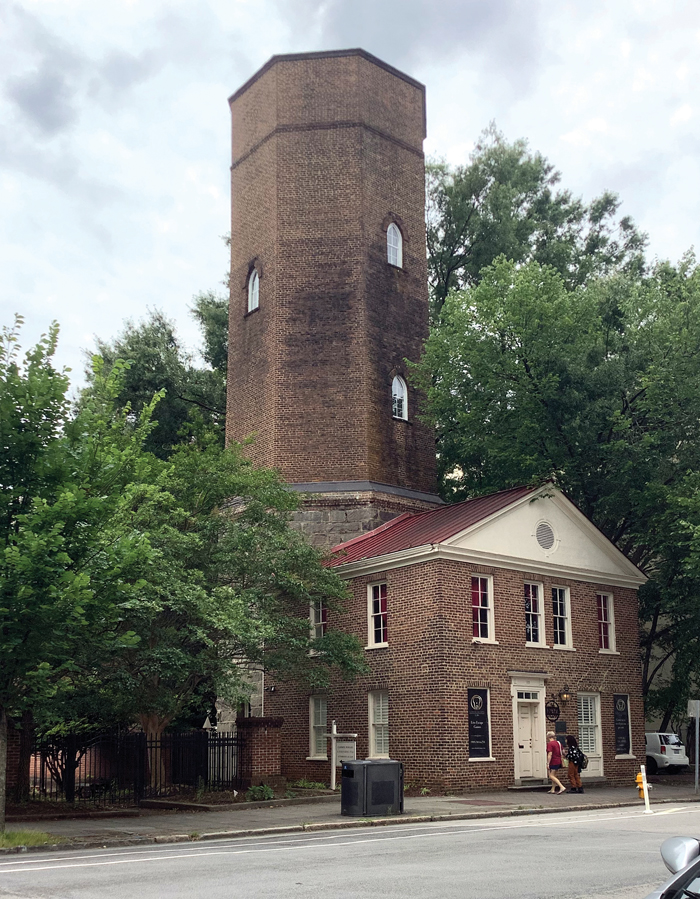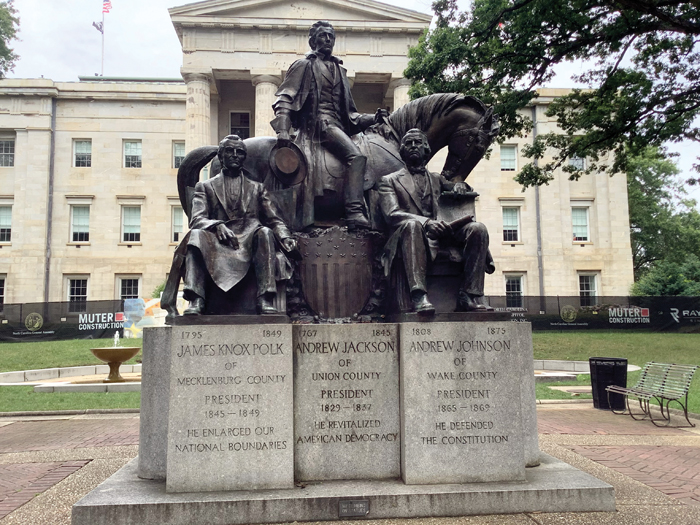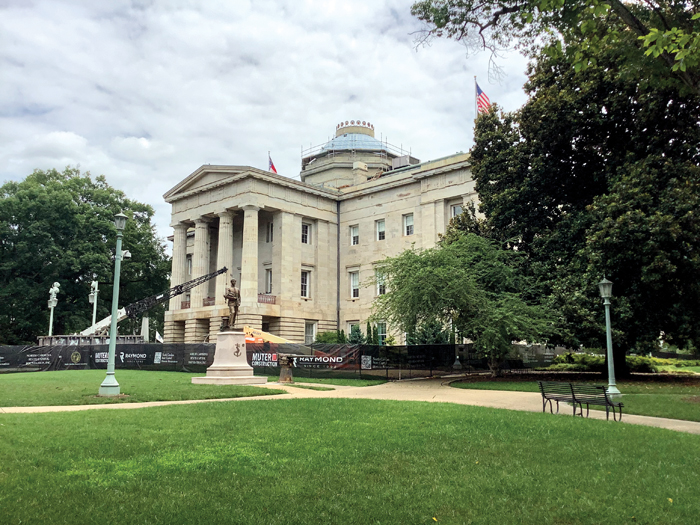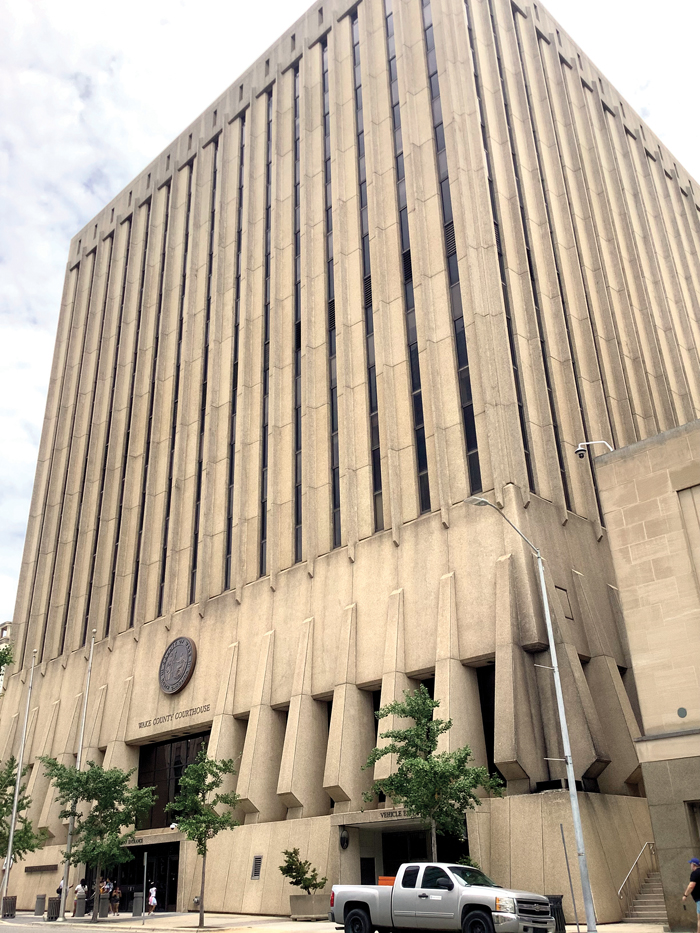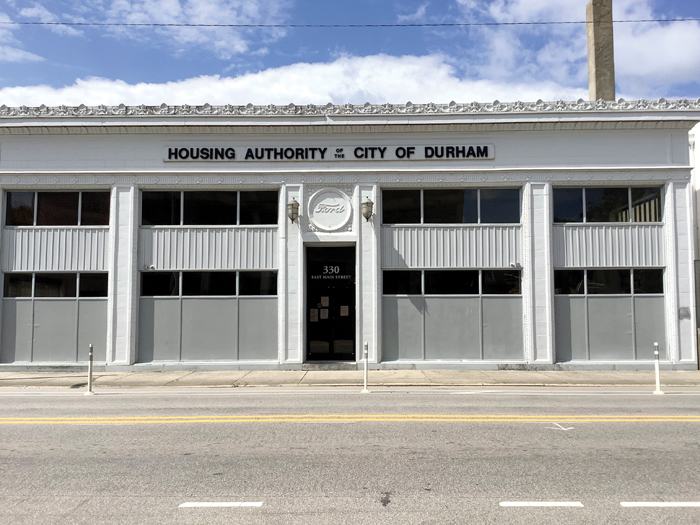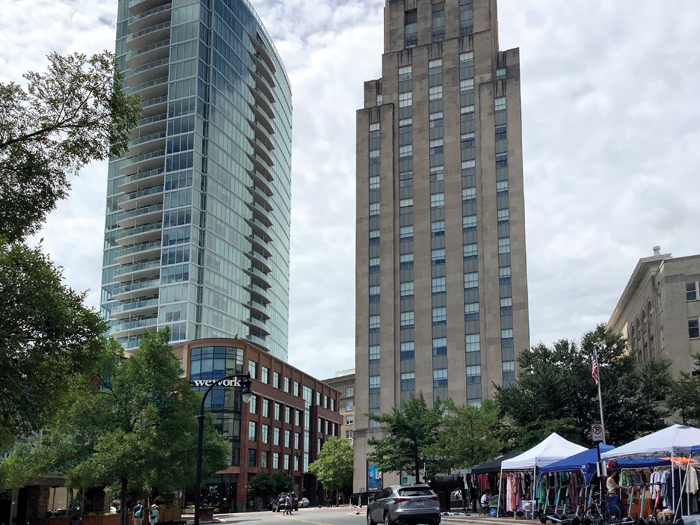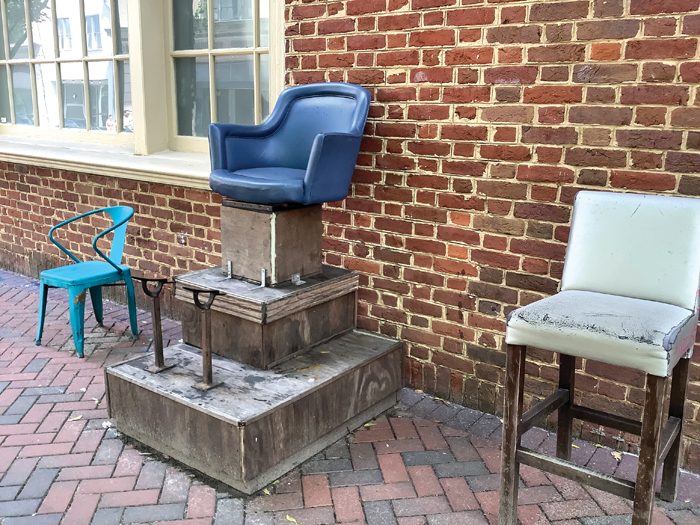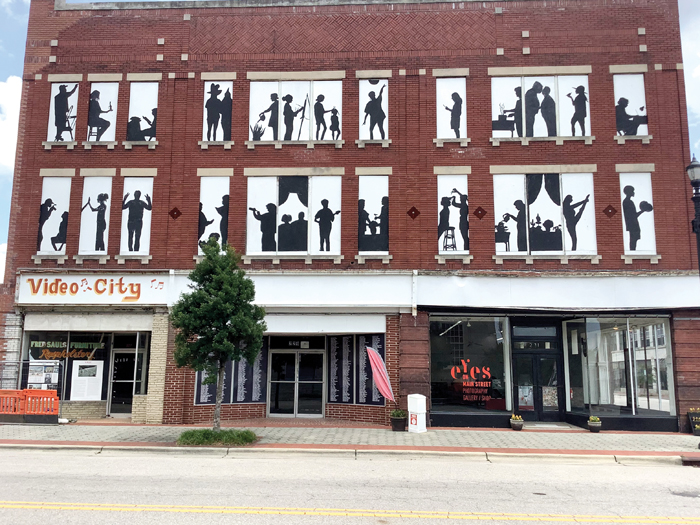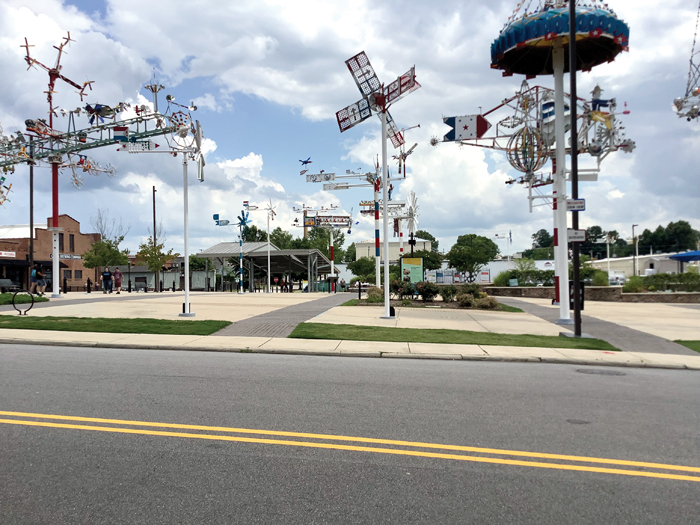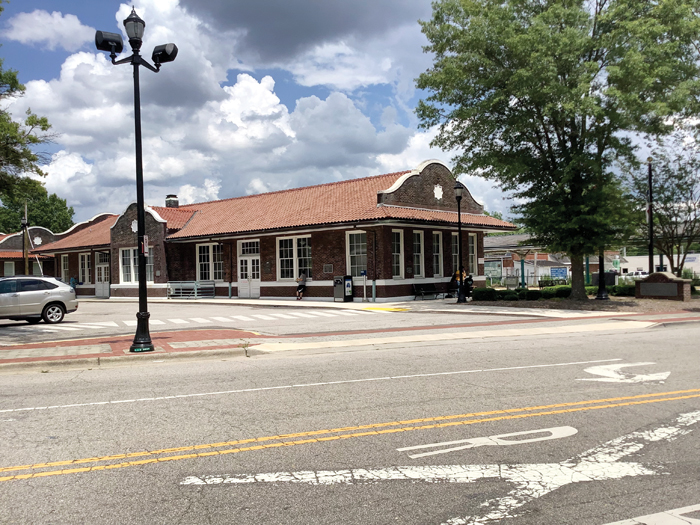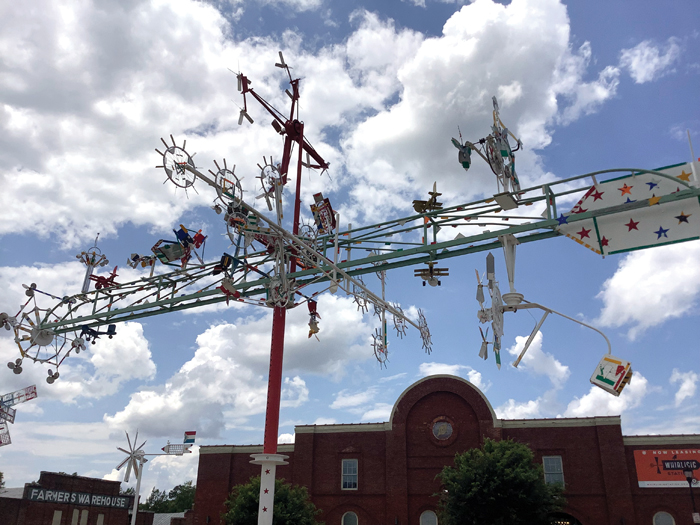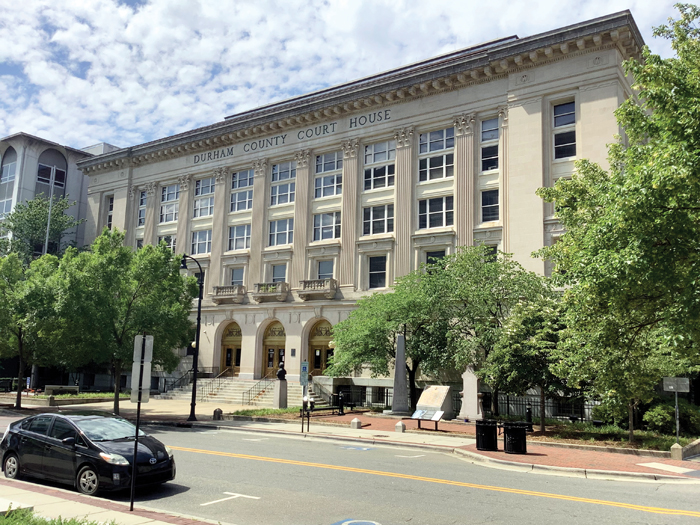Gotta Run: Two big cities and then some fun
Published 12:05 am Saturday, July 8, 2023
Editor’s note: David Freeze is completing a challenge to run in a few miles in every county seat in all 100 N.C. counties. Contact him at david.freeze@ctc.net.
On Saturday, June 24, I headed for the two biggest cities left on my list. I wanted to visit Durham and Raleigh while there was little traffic, especially in the governmental areas. I got my way in Durham, county seat of Durham County, as I rolled into the old part of town, where I had never been. Siri nearly always brings me to within sight of the most recent county courthouse and she did it again. Incorporated in 1869 and named for Bartlett Durham who donated the original land, Durham thrived on tobacco and agriculture early. With heavy Civil War activity, segments of both armies passed through the area often and enjoyed the Brightleaf tobacco. The word spread through those armies and demand was high for the more pleasant tobacco and sales boomed for years to come.
Cotton and energy production were other economic drivers. In an area where many of the tobacco warehouses and at least one large cotton mill once thrived, the old town section of Durham is undergoing a massive renovation and reuse of old buildings. As I toured the government area, I found that the old Ford dealership, Johnson Motor Company from 1914, had now been reclaimed for the Housing Authority of Durham. The 17-story Hill Building, completed in 1937, is now a 165-room luxury hotel. A popular bakery has reclaimed most of the former newspaper building. Several major churches dating from the late 1800s and the early 1900s were located close by. Just as in Charlotte, lots of high-rise housing was under construction. The old Durham County Courthouse was completed by 1920.
Raleigh was my next stop, where I found a totally different setting. Traffic was congested as I neared the government center. I realized that the Pride Festival was underway, starting near the capitol building. While most paid to park, I didn’t, after several loops of the area.
Raleigh, county seat of Wake County, is the second most populous city in N.C. and is named after Sir Walter Raleigh, sponsor of Roanoke, the “Lost Colony” in Dare County. Raleigh was incorporated in 1792 and is one of the few cities in the United States that was planned and built specifically as a state capital.
The state capitol building, constructed in 1840, has been undergoing a major renovation. The building housed all the state government affairs until 1888. This is the second major renovation of the historic structure. Copper on the roof and dome are being replaced, the heating and ventilation system is being updated and mortar and stone on the building’s exterior are being repaired. Roof renovation has happened before in 1888 and 1971. The copper roof will start shiny and then take 10-20 years to return to the recognizable green color caused by oxidation. Statues on the capitol grounds include Civil War Governor Zebulon Vance and Presidents George Washington, James K. Polk, Andrew Jackson and Andrew Johnson, who was born in Raleigh.
The Wake County Courthouse is another massive building with 15 stories, constructed between 1968 and 1970. Most interesting to me was a water tower near the capitol building, built of brick in 1887.
After all this government and big city exploration, I was happy to drive to Wilson. From Our State magazine articles, I knew one thing about Wilson, a city park famous for “whirligigs.” I thought I would have to ask for directions to the park but realized it’s by far the most famous thing in town and easily seen. The park is huge, with whirligigs of all sizes, shapes and colors. While they all look small in magazine articles, the 30 displays include some that are 50 feet in the air and almost as long as tractor-trailers while likely as intricate. Vollis Simpson was a WWII Army staff sergeant who began an amazing hobby after the war. He built these things and began to save them around his farm. When Simpson’s health began to fail, the Town of Wilson struck an agreement that would honor the master-fabricator for years to come. On this very warm Saturday afternoon, the park was busy. Food, a play area, a stage and a whirligig museum are part of the park. The N.C. legislature designated Simpson’s “gigs” as the official folk art of the state and they have been displayed across America.
I had visited Wilson briefly on my run across the N.C. in 2018 but I didn’t stay long. Wilson was incorporated in 1849 and named for Mexican War hero General Luis Wilson. I found yet another massive courthouse, built in 1924, and interesting streets lined by historic houses and buildings, including the site of N.C.’s first ABC store. I stopped to take a photo of some of Art Dept.’s screen-printed T-shirts that led to a wonderful encounter. I met Greg Boseman and Coach H. B. Harris. Coach filled me in on what to see, including a remaining railroad roundtable and the drugstore where Ava Gardner was discovered. She attended high school and college locally. I learned of Wilson’s glory days due to tobacco. Tobacco and the railroad fueled major growth from the 1940s-60s. Harris told me that an old tobacco warehouse floor was the foundation for Whirligig Park, and I discovered it was a Confederate cemetery before that. Coach also told me that Wilson was once considered the “World’s Greatest Tobacco Market” and the local radio call letters were WGTM. He said Wilson had ties to Soupy Sales and Booker T. Washington.
Just as Boseman handed me a free shirt, a truck drove up and Coach said, “You’ve got to meet this guy!” The driver was entertainer James Brown’s drummer during part of his heyday. I met Sam Lathan, but sadly messed up the photo. Brown was known as the “Hardest working man in show business.”
Wilson piqued my interest and tops my current list of many interesting towns. I had 4.75 running/walking miles in these three towns. See you soon with more!


